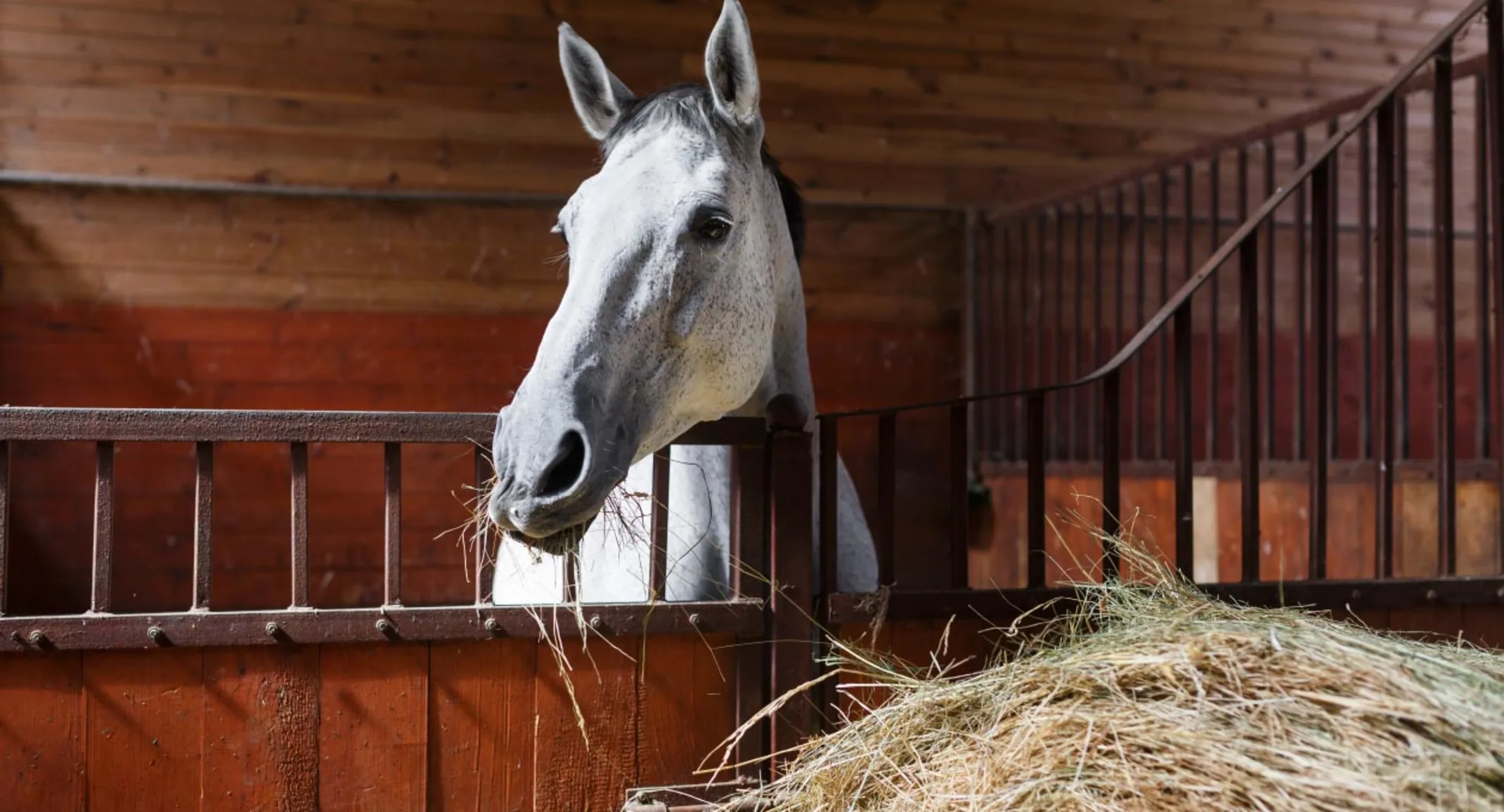That Gut Feeling: The What, Why, & How to Identify / Treat Equine Gastric Ulcers
Educational Articles

The Unbridled Truth About Gastric Ulcers in Horses
The development of gastric ulcers in horses, known as Equine Gastric Ulcer Syndrome (EGUS), can be a common cause of decreased performance, weight loss, behavioral changes, and colic. In recent studies, gastric ulcers have been shown to be affecting over 60% of performance horses and seen in more than 90% of our thoroughbred race horses! In order to further understand EGUS, we must first define what gastric ulcers are. We then take a look at our current understanding as to why EGUS occurs, focusing specifically at the anatomical and physiological nuances of the horse stomach that predispose them to developing gastric ulcers. Once we understand the “what” and the “why”, we will dive further and look at the clinical presentation of horses who are suffering from gastric ulcers and how they are diagnosed by your veterinarian.
The What: Equine Gastric Ulcer Syndrome
Equine Gastric Ulcer Syndrome (EGUS) is an overarching term used to describe the multiple types of gastric ulcerations in the horse. Gastric ulcerations are open sores within the stomach lining of horses which are caused by breaks in the mucous membrane lining which fail to heal. We can further break this down into two categories based on the location in the stomach Equine Squamous Gastric Disease (ESGD) and Equine Glandular Gastric Disease (EGGD). Why such differentiation occurs is due to the differences in epidemiology, prevalence, risk factors, and pathophysiology. As the purpose of this article is for a basic understanding of EGUS, we will ignore these differentiations and group these separate diseases into one and cover their commonalities.
In humans, a pathogenic bacterium called Helicobacter pylori is known to be a common causative agent in the development of gastric ulcers. However, extensive research has found that this is not the cause in our equine companions and the development is thought to be related to a combination of several risk factors. Many of these predisposing factors for EGUS relate back to the nuanced anatomy of the equine stomach. Having a foundational understanding of the anatomy of a horse stomach can be useful to reduce risk factors associated with development of gastric ulcers.
The Why: Inside Look into the Equine Stomach
The equine stomach can be broken down into two major compartments: the upper portion (non-glandular stomach) and the lower portion (glandular stomach) stomach. The two portions are separated distinctly with a line called the margo plicatus.
The non-glandular region of the stomach consists of a keratinized, stratified squamous epithelium (a type of “tougher” protective covering). The primary responsibilities of this region are: accepting of incoming food and microbial fermentation. No glandular acidic secretions are produced here and the region’s primary buffering (to neutralize stomach acid) occurs via saliva secreted into the horse’s mouth.
The glandular portion of the stomach is covered with a protective mucous layer produced by specialized cells to protect it from acid produced in gastric glands. This region’s primary responsibility is gastric acid production to continue with food breakdown (acidic and enzymatic digestion). EGUS is the result of a disequilibrium between mucosal aggressive factors (e.g., stomach acid, digestive enzymes, and other acids) and mucosal buffers that neutralize the acid (e.g., saliva, forage). This disequilibrium (acids > buffers) causes the pH outside cells to decrease significantly (becoming more acidic) causing the protective cell layer lining the stomach (epithelial layer) to die off and expose the more sensitive underlying cells to this insult.
The How to Identify: Clinical Presentation of Gastric Ulcers
One of the most challenging aspects of recognizing Equine Gastric Ulcer Syndrome (EGUS) is that there are no consistent/definitive clinical signs that every horse shows. To complicate things further, many predisposing factors such as: NSAID exposure, stress, diet, environment, competition, etc.; may mask or show similar symptoms as EGUS. This makes generating a perfect list of EGUS symptoms near impossible. However, included below are many of the most common examples of clinical signs that horses with EGUS may exhibit:
Colic/recurrent colic
Diarrhea
Behavioral changes
Poor performance
Poor coat condition
Girthiness
Reluctance to train
Weight loss
Poor appetite
Teeth grinding
Because there are no universal clinical signs and EGUS can be caused by a variety of predisposing factors, arriving to definitive diagnosis of EGUS becomes immensely important. For this, the only definitive way (gold standard, if you will) to diagnose EGUS is through gastroscopy. Gastroscopy enables not only for visualization of gastric ulcers (including severity) but also helps your veterinarian define its relation to the presenting clinical signs which ultimately helps determine an appropriate treatment. Treatment without proper diagnosis of EGUS leaves such questions as: How do we know if that is the correct treatment? Are we treating with the correct medication? How long should we be treating for? A diagnosis of EGUS through gastroscopy removes the quite literal guessing game of the symptoms and turns it into knowing the cause of them. It also enables equine veterinarians to formulate an appropriate treatment plan for your horse to get them (and you!) back on the horse sooner.
Putting Your Best Hoof Forward:
As the world of our equine athletes evolves and continues to get increasingly competitive, it is imperative that our standard of veterinary care for these horses moves at a similar pace. As we move forward, finding the absolute cause (definitive diagnosis) becomes increasingly important; enabling better and more targeted treatment options while laying foundation for a personalized “precision medicine” view of your horse’s health.
- Article by: Jeremy M. Servantez, DVM
